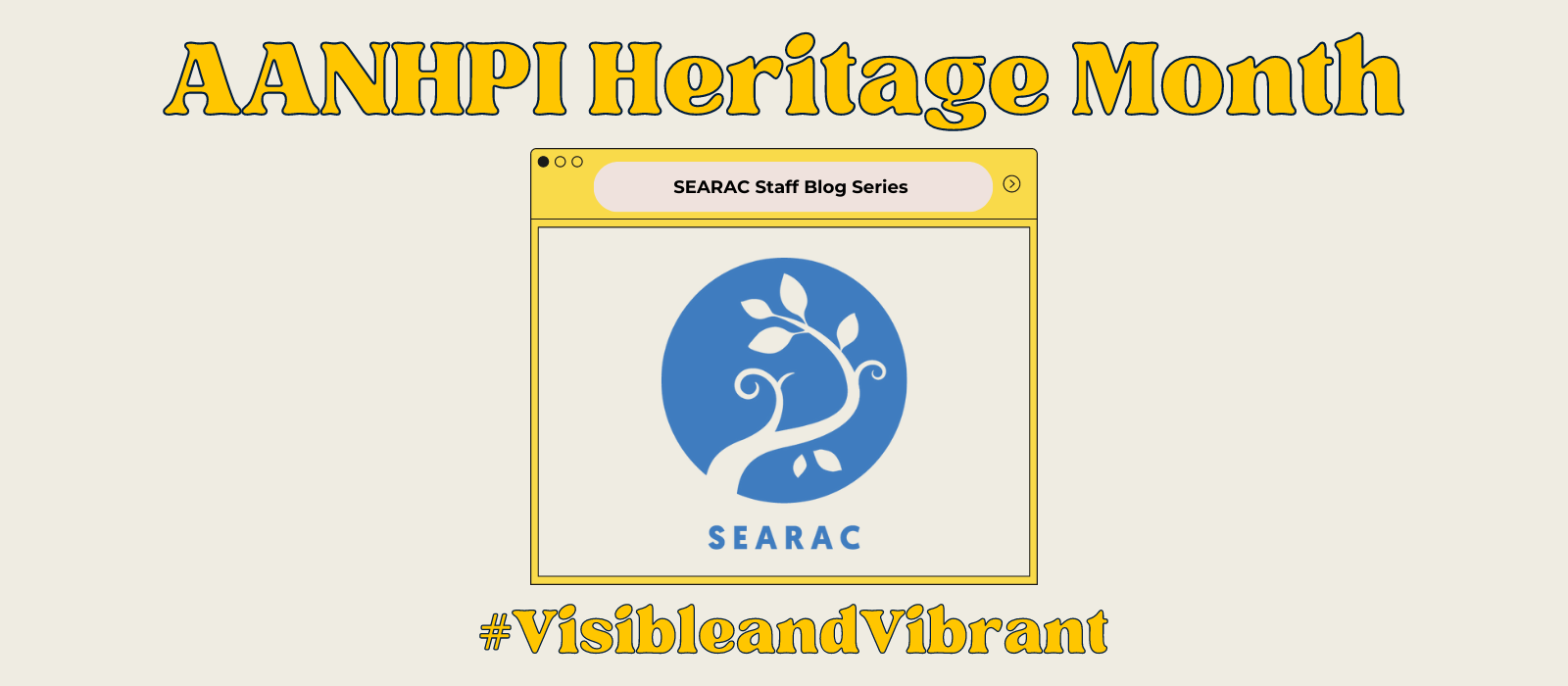By Jazmin Garett. This article originally appeared on the SEARAC blog.
I’m sitting around the floor mat surrounded by my mother, grandmother, aunties, uncles, and cousins. I scan the spread laid out in front of me and I determine that a pork rib and a ball of sticky rice is the least spicy of foods from which to choose. I look at my mom sitting next to me and tell her what I want to eat. There are plates of papaya salad soaked in the pungent, fermented freshwater fish sauce paired with Thai chili pepper that puts a kick in your nose, tin trays of pork ribs and beef brisket marinated with the spices and flavors of Laos, and several other dishes, such as laab, that are packed with herbs. Bamboo baskets of freshly cooked sticky rice accompany the flavorful selection.
Before we settled down to eat on the floor of our screened-in porch, I played with my cousins in and out of the house, running around the backyard. The men are outside monitoring the meat on the grill with their beers and cigarettes. The women are inside the kitchen, spread across tables, counters, and even the floor preparing food. This is where the meal comes together. A butcher knife repeatedly chops against a thick, wooden cutting board, indented with lines of overuse. On the stove sits a metal hourglass-shaped pot which holds a cone-like bamboo basket, cooking the pre-soaked rice that will be the staple pairing to all of the other dishes. Someone has a green papaya in one hand as they use the other to slice and shave the unripe fruit into noodle-shaped slivers. Old newspapers cover a part of the floor where another person sits with a mortar and pestle between their legs. There is a rhythmic scraping of a metal spoon and the clanging of the wooden pestle against the stone mortar. Mom, grandma, and the aunties are talking and gossiping in the sing-songy tone of Lao. In the kitchen, there is more than just a meal being prepared–a performance of song and dance takes place.

Jazmin and her family enjoying a spread of Lao food together. (Photo courtesy of Jazmin Garrett)
Roughly 20 years later, I reminisce on how my family used to gather for meals like this. I live more than 2,000 miles away from them now. I don’t get to indulge in Lao food as often since I don’t know how to make many of the dishes on my own and the nearest authentic Lao restaurants are a 40-minute drive from my apartment. If I come across one, I’ll stop by for a bite, deciding on a soup such as kaow piek, a thick rice noodle soup with a chicken broth. This is one of the few dishes that I’m sure will be a single serving.
Typically, going to eat Lao food for me is an event. I’ll gather as many friends together as I can and order the food “family style” for all of us to share. I believe there is no better way to eat food. I believe that food is meant to be shared with others. As a child, I didn’t recognize how cooking and eating together would merge into my values around not only food but also my values around community.
I believe that it is rare for most things to be done alone. Other people we encounter in our lives influence our decisions and outcomes either directly or indirectly. Friends, family, mentors, coworkers, and even strangers we may only ever meet once all contribute to who we are as individuals.
We make up communities that are full of people who reflect who we are, what we want to be, and the things we want to achieve. Whether the goal is to get a bill that stops deportations of Southeast Asian Americans through Congress or to create a meal for the whole family, turning to your community will bring you closer to success than doing it alone.
The opinions expressed in this article are those of the author and do not necessarily reflect those of the Diverse Elders Coalition.

